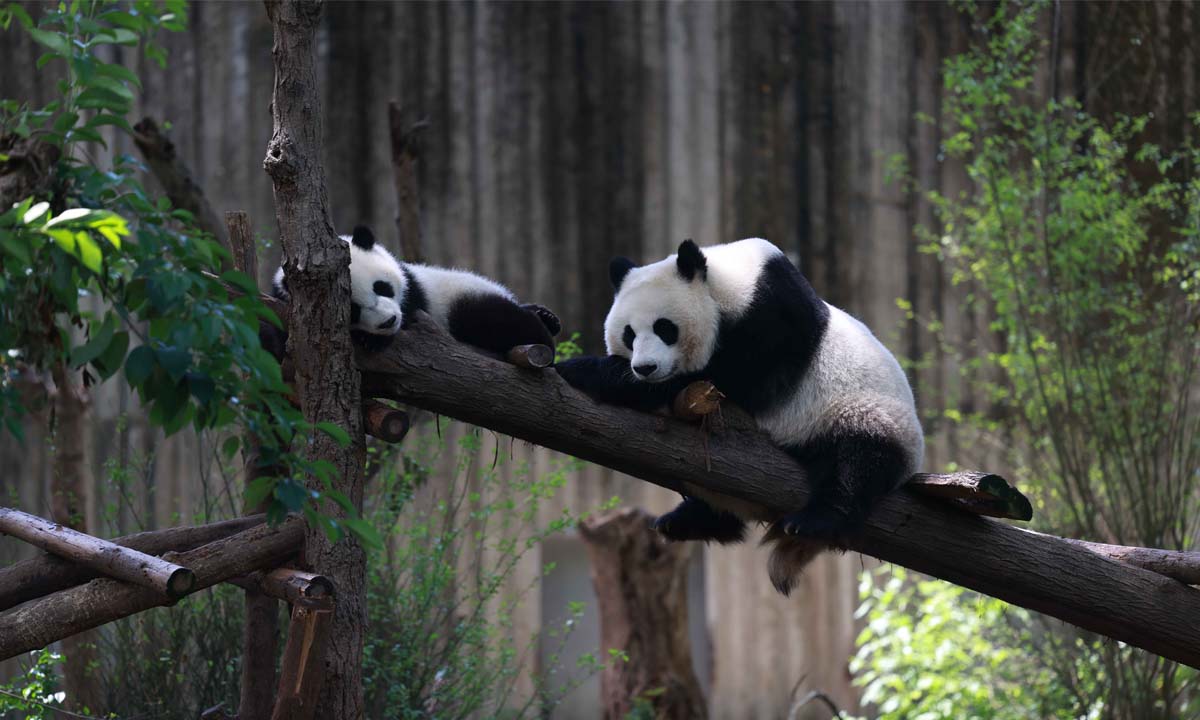
Pandas fall asleep hugging tree trunks at Chengdu Research Base of Giant Panda Breeding in Southwest China's Sichuan Province. Photo: IC
Before the New Year's Day of 2023 arrived, 15 giant panda cubs were born in 2022 at the Chengdu Research Base of Giant Panda Breeding, and visitors were delighted to see the vitality of the cubs.
The cubs are growing well at present, and the weight of the heaviest one has surpassed 12 kilograms, while the lightest one is nearly six kilograms, a staff member at the base told the Global Times on Tuesday.
The number of giant pandas at the base has reached 237 and the average annual growth rate of the captive giant panda population has increased to 12.2 percent thanks to scientific and technological breakthroughs.
The base has conducted scientific research cooperation with 45 institutes in 17 countries and regions, including the US, Japan and France and is carrying out long-term international cooperative breeding research projects for giant pandas with six countries such as Germany and Denmark.
As well as the base in Chengdu, other research centers in China have also welcomed dozens of panda cubs in 2022 following the improvement in breeding technologies.
There were 13 panda cubs born at the China Conservation and Research Center for Giant Panda in 2022, China Central Television reported.
As expectant giant pandas entered the pregnancy period one after another since July 2022, the center's breeders were on duty in shifts for 24 hours a day. Through video surveillance and on-site observation, the breeders kept an eye on the pandas' behavior and physical state.
The center has the world's largest captive giant panda population, at 364.
The successful birth of twin cubs helps a lot to enlarge the panda population. Li Dehong, a breeder at the center, said that wild giant pandas usually give up after giving birth to twin cubs as they cannot keep both alive in tough natural conditions, but at the breeding center, workers are ready to help the cubs as soon as they are born. The breeders usually take one of the twin cubs out and feed them. The survival rate of twin cubs has been sharply increasing in recent years.
With the rapid development of artificial panda breeding technologies in recent years, there are now more twin cubs in the world. The global captive panda population has grown to 673, nearly double the number of 10 years ago.




